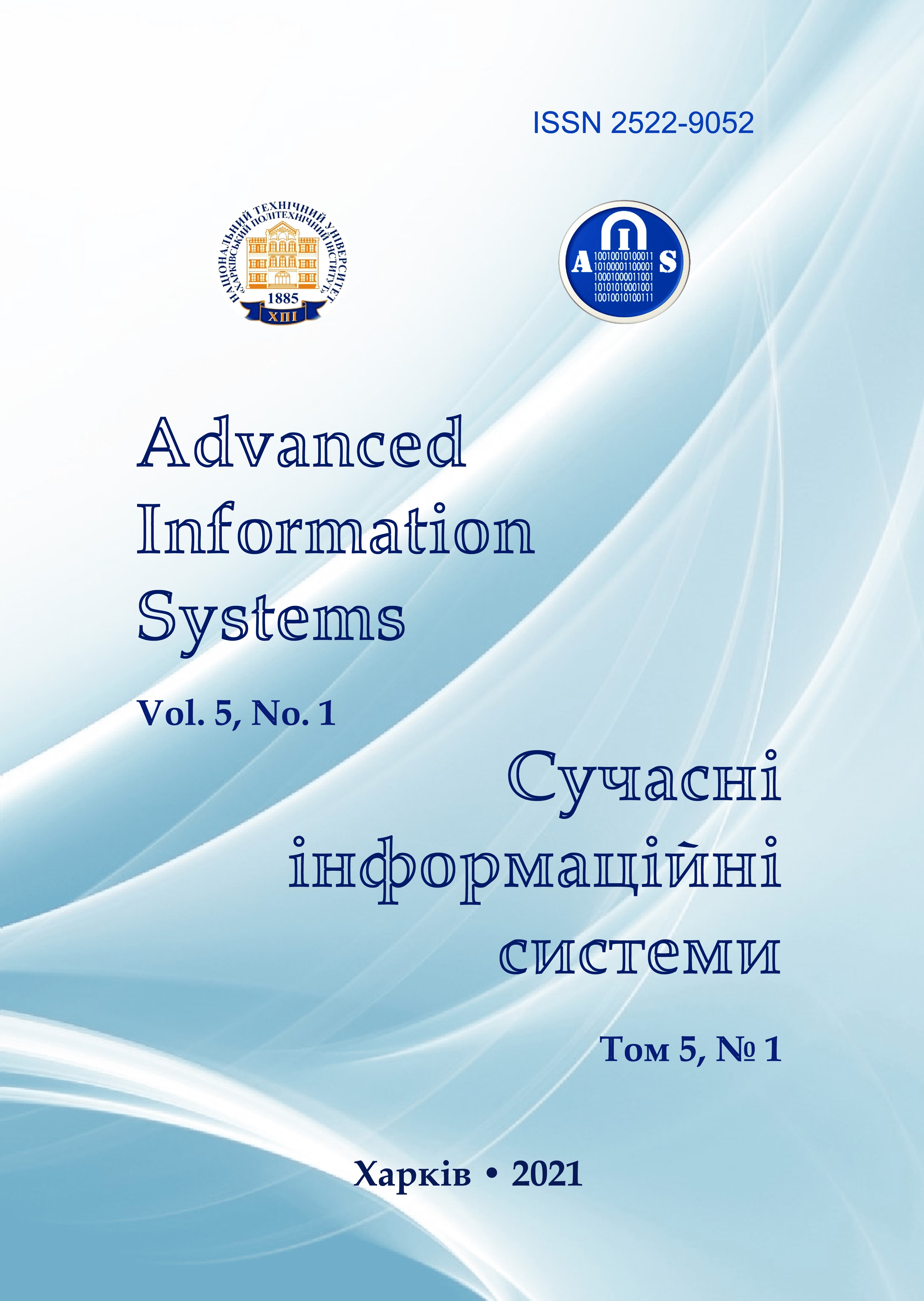Indicators of accuracy for determining the coordinates of radio emission sources in the short wave direction finding network
Main Article Content
Abstract
Direction finding networks have found application in radio monitoring, radio intelligence and passive radar systems. The operation of the direction-finding network in the short-wave range has a number of distinctive features, namely, long range of direction finders (up to several thousand km) due to ionospheric propagation of radio waves and high sensitivity of narrow-band signal receivers. In addition, the distance between direction finders can be hundreds or thousands of kilometers. Therefore the calculations should be carried out due to the location of the direction finders and radio sources on a spherical surface. In this work, analytical relationships are obtained for calculating the accuracy indicators of the estimation of coordinate information (latitude and longitude) at the output of the direction finding network in a rather general form in relation to the features of the short-wave range. The problem is solved in a geographic coordinate system for an arbitrary number of direction finders (two at least) and with their arbitrary location on the surface of Earth. To carry out a comparative analysis and assess the quality of coordinate information for various options for placing direction finders, it is proposed to display accuracy indicators using working zones (for example, round). The use of working areas allows a visual assessment on the map overall spatial pattern for accuracy indicators direction-finding network. The results of the calculation of working areas direction-finding network shortwave when placing it on the territory of Ukraine in the case of the smallest real errors direction-finding, and a mutual separation distance finders maximum permissible selected. The calculation results reflect the limiting possibilities for the accuracy of determining the coordinates of radio emission sources for such a direction finding network with a minimum number of direction finders (3 or 4). The given method of calculating working zones allows for the implementation of the best accuracy indicators to choose a specific option for placing direction finders on the territory of the country, taking into account the influence of all factors (approach of positions, availability of access roads, conditions for accommodating service personnel, etc.). As an example, the work considers 3 options for the location of direction finders with the maximum separation on the territory of Ukraine. The developed technique can also be used for other passive radar systems with direction finding coordinates, when it is necessary to take into account the spherical form of the Earth. Such a system can include two or more aerial reconnaissance aircraft with direction finders on board, as well as one aircraft or unmanned vehicle that determines coordinates by the method of multiple direction finding on the flight route.
Article Details
References
Saibel, A.H. (1953), Osnovy teorii tochnosti radiotekhnicheskih metodov mestoopredeleniya [Fundamentals of the theory of precision radio positioning methods], State publishing house oboronprom, Moscow, 53 p.
Shirman, Ya.D. and Manzhos, V.N. (1981), Teoriya i tekhnika obrabotki radiolokacionnoj informacii na fone pomekh [Theory and technique of processing radar information on interference background], Radio and communication, Moscow, 416 p.
Don, J. Torrieri. (1984), “Statistical Theory of Passive Location Systems”, IEEE Transactions on Aerospace and Electronic Systems, vol. AES-20, no. 2, pp. 183–198.
Chernyak, V.S. (1993), Mnogopozicionnaya radiolokaciya [Multi-position radar], Radio and communication, Moscow, 416 p.
Kukes, I.S. (1964), Osnovy radiopelengacii [Fundamentals of radio direction finding], Soviet radio, Moscow, 640 p.
Ankit, Jain (2019), Detection on HF radio transmitters using passive geolocation techniques, available to: https://tel.archives-ouvertes.fr/tel-02133926.
(2019), Introduction into Theory of Direction Finding, available to:
https://cdn.rohde-schwarz.com/us/campaigns_2/a_d/Introduction-Into-Theory-of-Direction-Finding.pdf.
Rembovskyj, A.M., Ashykhmyn, A.V. and Kozjmyn, V.A. (2010), Radyomonytoryngh – zadachy, metody, sredstva [Radio monitoring - tasks, methods, tools], Hotline Telecom, Moscow, 624 p.
Stepanov, N.N. (1948), Sfericheskaya trigonometriya [Spherical trigonometry], OGIZ, Moscow, 155 p.
Doluhanov, M.P. (1972), Rasprostranenie radiovoln [Radio waves propagation], Svyaz, Moscow, 336 p.
Meljnykov, Ju.P. (2005), Vozdushnaja radyotekhnycheskaja razvedka (metody ocenky effektyvnosty) [Aerial radio technical intelligence (methods of assessing effectiveness)], Radio engineering, Moscow, 304 p.
Meljnykov, Ju.P. and Popov, S.V. (2008), Radiotekhnicheskaya razvedka. Metody ocenki effektivnosti mestoopredeleniya isto-chnikov izlucheniya [Electronic intelligence. Evaluation methods efficiency positioning the radiation sources], Radio engineer-ing, Moscow, 432 p.
R&S®DDF1GTX High-Speed Scanning HF Direction Finder, available to:
https://www.rohde-schwarz.com/ua/product/ddf1gtx-productstartpage_63493-148040.html.
Avtomaticheskij obnaruzhitel'-pelengator signalov HF diapazona chastot «Vostok-OPK» [Automatic Direction Finder detec-tor-signal HF band "Vostok-OPK"], available to: http://www.rtv-pvo-gsvg.narod.ru/ doc/Prv_13.pdf.
